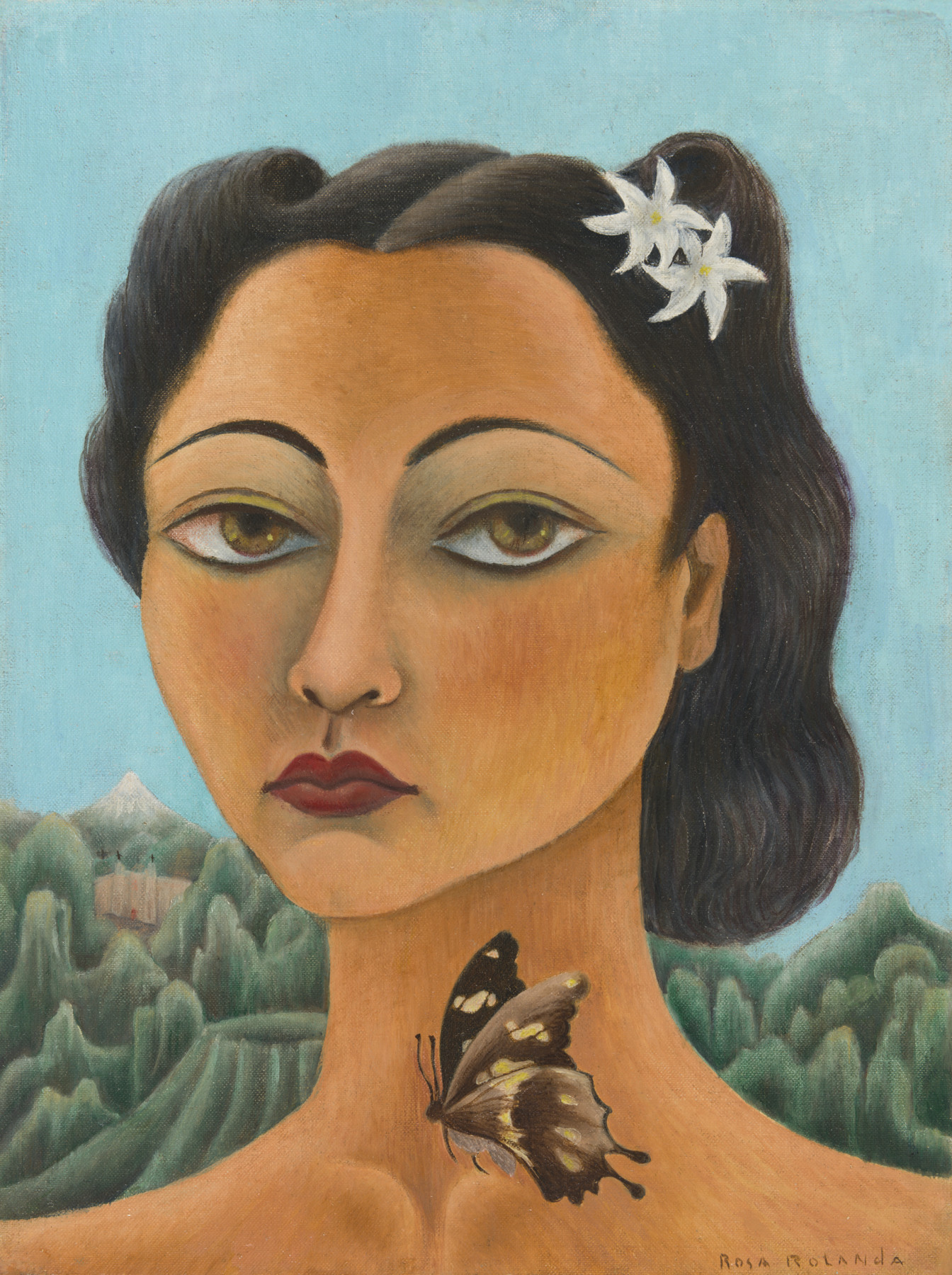Rosa Rolanda, Autorretrato (Self-portrait)
Crystal Bridges Museum of American Art, Bentonville, Arkansas
Selected by: Rod Bigelow, CEO
The work is currently in a large salon, along with over 25 other works in our early American galleries. It is oil on canvas, with Rolanda’s face taking up almost the entire frame, emphasizing a brilliant blue sky and a wondrous green landscape in the background.
There are many self-portraits in our collection, however most of them are men. I find the work powerful and confident, however some might interpret it as ambiguously distant. The eyes are seductive and you can’t help but stare at them for a long time. To create tension, Rolanda incorporated an ornate butterfly directly in front of her, interrupting her long neck. The butterfly can be interpreted in so many ways including transformation, spirituality or a journey of the soul. The work is important because it adds depth to our portrait collection, but also because it invites dialogue and sparks curiosity about the many ways to interact with the work from different cultural perspectives.
Rolanda, a California native of Mexican and Scottish ancestry, was multifaceted, dabbling in choreography and photography in addition to painting. In fact, she became a celebrated dancer and performer in New York City before touring with the Ziegfeld Follies in Paris, where she met and was photographed by Man Ray (memorably in a flamenco costume). After moving to Mexico City in the 1930s, she devoted herself more to painting. She called herself a neo-figurative artist, but like her friend Frida Kahlo, she is also associated with Mexican modernism, a revolutionary movement that sought to foreground indigenous Mexican identity.
This is not a work I take on most tours, but I take a quiet moment with “her” as I walk through the galleries to calm and center myself. Rolanda has included her signature in the lower right corner in small capital letters. By making and signing her self-portrait, she was coming to terms with her own identity – something we all do from time to time.
—Rod Bigelow, CEO of Crystal Bridges, tells Margaret Carrigan.
Which artwork hangs opposite Mona-Lisa? What lies beneath Van Gogh’s sunflowers? In The Permanent Collection, we travel to museums around the world, uncovering hidden treasures and telling stories behind works of art that are often out of the spotlight.
Follow Artnet News on Facebook:
Want to stay up to date in the art world? Subscribe to our newsletter and receive breaking news, insightful interviews and astute critical views that drive the discussion forward.




